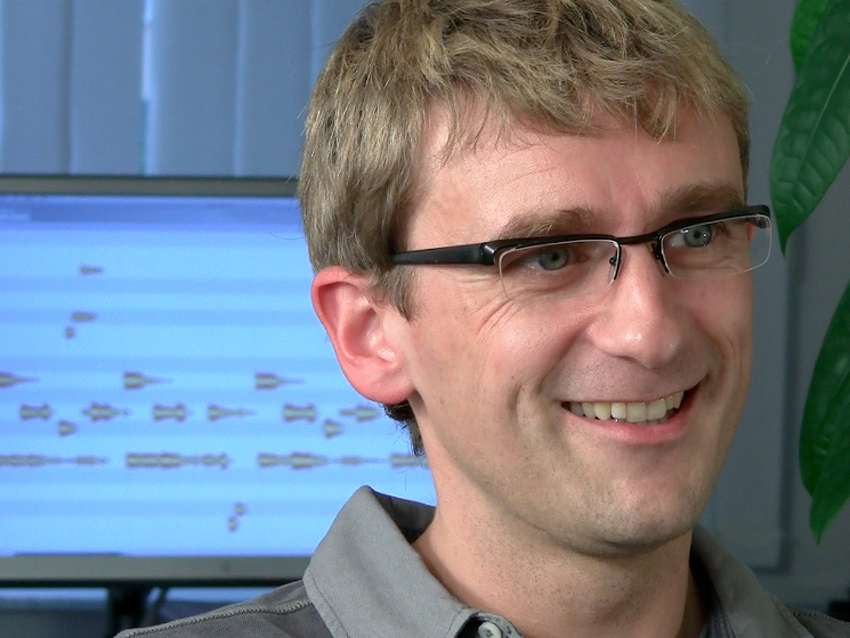Celemony explains ARA: new VST/AU/RTAS plug-in extension

OK, the headline doesn't make it sound all that exciting, but bear with us, because Celemony's new ARA (Audio Random Access) technology could have some interesting ramifications. Case in point? ARA has enabled PreSonus to implement Melodyne into Studio One v2.
The videos above and below do a good job of explaining what ARA is all about, but to summarise, it expands the level of communication between the DAW and plug-ins by adding an extra channel though which tempo, pitch, rhythm and other information about an audio file can be transferred.
Celemony says that it'll be working with other manufacturers in the future: you can find the press release below the video.
Celemony ARA press release
Celemony Software GmbH is proud to present "ARA Audio Random Access" - a pioneering extension for existing audio plug-in interfaces. ARA expands the communication between plug-in and DAW, affording the plug-in for the first time musical access to the audio data. Developed by Celemony in collaboration with PreSonus, ARA presently connects the PreSonus DAW Studio One 2, shipping this fall, with the current Versions 1.3 of Melodyne. Other manufacturers and products will follow.
The plug-in interfaces widely used today - such as VST, AU and RTAS - still work essentially the way analog mixers did in the past: a plug-in only receives audio data from the DAW track at the moment of playback, and therefore knows nothing about the entire track - and nothing either, therefore, of the musical context. For reverb, echo and EQ, this view through a real-time keyhole may be good enough, but not for plug-ins like Melodyne that need an overview of the entire clip for the analysis of the musical context and the editing of notes, rhythms and tempo. Previously, a time-consuming transfer of the audio file to the plug-in was required, but with ARA things are now far simpler:
As an extension of the existing plug-in interfaces, ARA opens an additional channel of communication through which the DAW and plug-in can exchange information about the audio file, tempo, pitch, rhythm and much more, which allows them to work together considerably more closely. The plug-in is closer to what is happening in the DAW and can therefore work more smoothly and effectively; the DAW, for its part, is able to integrate the plug-in far better and make more targeted use of it - exactly as though it were part of the DAW.
A good example of the greatly enhanced workflow with ARA is the interaction between PreSonus Studio One 2 and Melodyne. For with ARA, Melodyne is seamlessly integrated into Studio One and serves there as an alternative to the normal waveform editor: audio segments are opened directly in Melodyne and follow automatically when moved and copied as well as changed in tempo or time signature. Studio One, for its part, uses Melodyne for high-quality time stretching and to derive information about the musical content, i.e. for Audio-to-MIDI via drag-and-drop and for the evaluation of Melodyne's tempo recognition.
Get the MusicRadar Newsletter
Want all the hottest music and gear news, reviews, deals, features and more, direct to your inbox? Sign up here.
"It has long been a desired objective to enhance the integration of Melodyne into DAWs," explains Celemony software architect Carsten Gehle. "With PreSonus, we conceived the notion of realizing this as an extension of existing plug-in interfaces. So ARA was developed in equal measure from the standpoint of a DAW developer and a plug-in developer. As a result, it takes account of the needs of both sides, and both therefore derive maximum benefit from it. For the present, ARA offers an entirely new Melodyne experience in Studio One 2, but other DAWs and plug-ins should follow."

I’m the Deputy Editor of MusicRadar, having worked on the site since its launch in 2007. I previously spent eight years working on our sister magazine, Computer Music. I’ve been playing the piano, gigging in bands and failing to finish tracks at home for more than 30 years, 24 of which I’ve also spent writing about music and the ever-changing technology used to make it.
“The included sample content is not only unique but sonically amazing, as it always was”: Spitfire Audio BBC Radiophonic Workshop review
“We were able to fire up a bass sound that was indistinguishable from the flavour of New Order’s Blue Monday in seconds”: EastWest Sounds Iconic review









